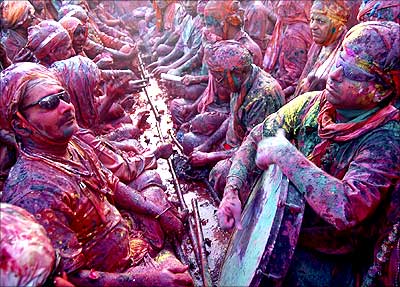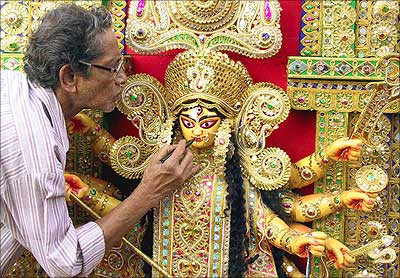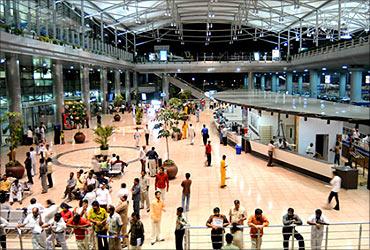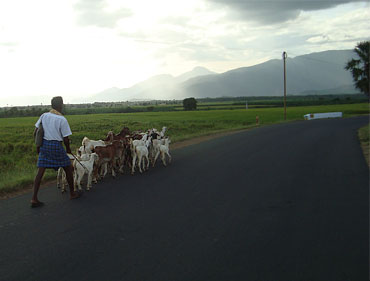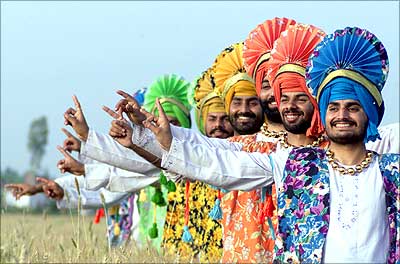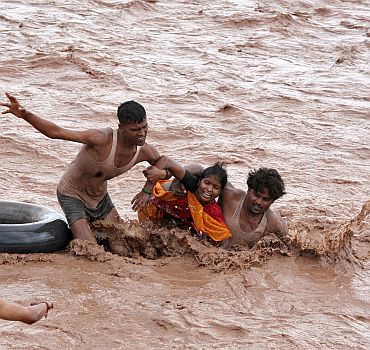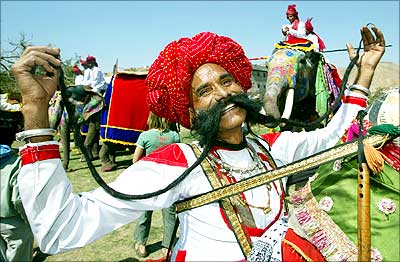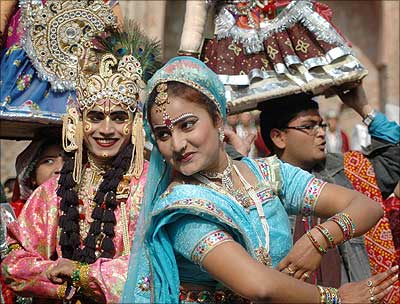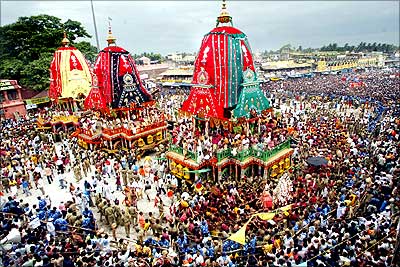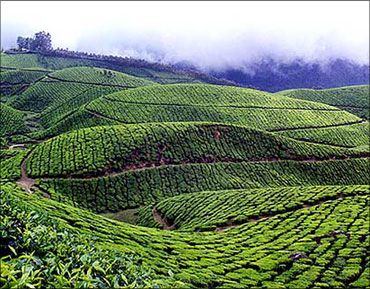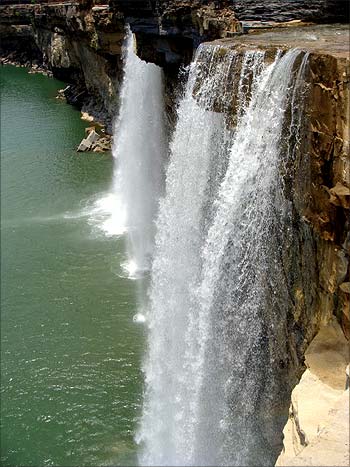 | « Back to article | Print this article |
Fiscal deficit in states: Maharashtra tops the list
India is one of the fastest growing economies in the world. Its foreign exchange reserves currently stand at over $300 billion, its growth rate is a blistering 8-plus per cent, and the future seems bright.
However, there's a major problem for India: its high fiscal deficit. India's fiscal deficit will be at around 5.5 per cent of its gross domestic product (GDP) in 2010-11 as a surge in revenue collections has offset high expenditure, according to a mid-term analysis of the economy for fiscal 2010-11 tabled in Parliament on Tuesday.
Fiscal deficit is essentially the difference between what the government spends and what it earns. It is expressed as a percentage of GDP. Higher the fiscal deficit, weaker the economy.
The public debt has almost reached four and half years of revenue. Therefore, there are reasons to worry. This is done as it may not be appropriate to compare the deficits of different years in absolute terms.
High fiscal deficit restricts the government's ability to fund development projects, retards growth, does not propel employment-generation and leads to higher interest rates. Also government spending on social welfare, education, health, poverty alleviation too are hampered due to high fiscal deficit.
Fiscal deficit can be reduced either by increasing revenues or by reducing expenditure, or both. But revenues can be increased only by raising taxes or by divestment. Since raising taxes will lead to more woes for the government, divestment is the easy way out.
One other way to fund development projects is to borrow from the market. However, given the poor economic condition of an economy, lenders are shy of lending funds. If at all they do lend, it is at very hgih interest rates, and this puts the already-burdened government in a deeper hole.
So what is the condition of the Indian states? States with high fiscal deficit will find it difficult to propel growth.
According to Reserve Bank of India data, in 2009-2010, Maharashtra emerged as the state with the highest fiscal deficit at Rs 26,562 crore (Rs 265.62 billion).
Maharashtra: A fiscal deficit of Rs 26,562 crore or Rs 265.62 billion (BE*)
It is the second most populous after Uttar Pradesh and third largest state by area in India. Maharashtra's is India's leading industrial state contributing 15 per cent of national industrial output and over 40 per cent of India's national revenue.
Its capital is Mumbai, which is also the business capital of India. Mumbai houses the headquarters of almost all major banks, financial institutions, insurance companies and mutual funds in India.
To know the fiscal deficits of other states in special category, click NEXT . . .
*Budgetary estimate
Fiscal deficit in states: Maharashtra tops the list
Uttar Pradesh: Rs 23,299 crore or Rs 232.99 billion
With a population of over 190 million people, it is India's most populous state. Uttar Pradesh is the second largest state-economy in India contributing 8.17 per cent to India's total gross domestic product between 2004 and 2009. Its capital is Lucknow.
Click NEXT to read further. . .
Fiscal deficit in states: Maharashtra tops the list
West Bengal: Rs 22,984 crore or Rs 229.84 billion
West Bengal is the third largest contributor to India's gross domestic product and has the second-largest number of voters in India. Its capital is Kolkata.
Agriculture is the leading occupation in West Bengal. Rice is the state's principal food crop. Other food crops are pulses, oil seeds, wheat, tobacco, sugarcane and potatoes. Jute is the main cash crop of the region.
Click NEXT to read further. . .
Fiscal deficit in states: Maharashtra tops the list
Andhra Pradesh: Rs 16,152 crore or Rs 161.52 billion (BE)
It is India's fourth largest state by area and fifth largest by population. Its capital is Hyderabad.
The state's IT sector is expanding at a rate of 52.3 per cent every year. Hyderabad is considered to be the bulk drug capital of the country. Fifty per cent of the top 10 companies in the pharmaceutical field are from the state.
Click NEXT to read further. . .
Fiscal deficit in states: Maharashtra tops the list
Gujarat: Rs 12,148 crore or Rs 121.48 billion (BE)
Gujarat's capital is Gandhinagar. The state played an important role in the economic history of India throughout the history of India.
It houses major ports on the Indian Ocean in both ancient and modern history, and hence became one of the main trade and commerce centres of India. Gujarat has some of the largest businesses in India.
Major agricultural produce of the state include cotton, groundnuts (peanuts), dates, sugar cane, milk and milk products. Industrial products include cement and petrol.
Click NEXT to read further. . .
Fiscal deficit in states: Maharashtra tops the list
Tamil Nadu: Rs 11,823 crore or Rs 118.23 billion (BE)
Its capital and largest city is Chennai. Tamil Nadu is the 11th largest state in India by area (about the size of Greece) and the seventh most populous state. It is the fifth largest contributor to India's gross domestic product.
Tamil Nadu is one of the most urbanised states in India. The state has the highest number (10.56 per cent) of business enterprises and stands second in total employment (9.97 per cent) in India.
Click NEXT to read further. . .
Fiscal deficit in states: Maharashtra tops the list
Punjab: Rs 9,660 crore or Rs 96.6 billion (BE)
The state's capital is Chandigarh. Agriculture is the largest industry in Punjab. The state is the largest single provider of wheat to India.
The state's other major industries include the manufacturing of scientific instruments, water meter, electrical goods, financial services, machine tools, textiles, sewing machines, sports goods, starch, tourism, fertilizers, bicycles, garments, and the processing of pine oil and sugar.
According to India Today, Punjab has been awarded best overall state since, 2003 and has been able to retain the top position every year. It also affords best quality of life to its residents. Punjab has excellent infrastructure.
Click NEXT to read further. . .
Fiscal deficit in states: Maharashtra tops the list
Haryana: Rs 8,557 crore or Rs 85.57 billion (BE)
Haryana is one of the wealthiest states of India and has the third highest per capita income in the country at Rs 67,891, including the largest number of rural crorepatis in India.
Haryana is also one of the most economically developed regions in South Asia.
Click NEXT to read further. . .
Fiscal deficit in states: Maharashtra tops the list
Karnataka: Rs 8,493 crore or Rs 84.93 billion (BE)
The state's capital is Bengaluru. Karnataka had an estimated gross state domestic product of about $58.23 billion in 2008-09 fiscal year.
Since the 1980s, Karnataka has emerged as the pan-Indian leader in the field of information technology. Karnataka also leads the nation in biotechnology.
It is home to India's largest biocluster, with 158 of the country's 320 biotechnology firms being based here.
Click NEXT to read further. . .
Fiscal deficit in states: Maharashtra tops the list
Rajasthan: Rs 8,420 crore or Rs 84.2 billion (BE)
Jaipur is the capital and the largest city of the state. Rajasthan's economy is primarily agricultural and pastoral. Wheat and barley are cultivated over large areas, as are pulses, sugarcane, and oilseeds.
Cotton and tobacco are the state's cash crops. Rajasthan is among the largest producers of edible oils in India and the second largest producer of oilseeds.
Rajasthan is also the biggest wool-producing state in India and the main opium producer and consumer.
Click NEXT to read further. . .
Fiscal deficit in states: Maharashtra tops the list
Madhya Pradesh: Rs 6,436 crore or Rs 64.36 billion (BE)
Its capital is Bhopal. Between 1999 and 2008, the state's growth rate was very low 3.5 per cent.
According to the India State Hunger Index compiled by the International Food Policy Research Institute, the malnutrition situation in Madhya Pradesh is 'extremely alarming', receiving a severity rating between Ethiopia and Chad.
Click NEXT to read further. . .
Fiscal deficit in states: Maharashtra tops the list
Orissa: Rs 6,004 crore or Rs 60.04 billion (BE)
Its capital is Bhubaneswar. Orissa has abundant natural resources and a large coastline.
It contains a fifth of India's coal, a quarter of its iron ore, a third of its bauxite reserves and most of the chromite.
It receives unprecedented investments in steel, aluminium, power, refineries and ports. India's topmost IT consulting firms, including Mahindra Satyam, Tata Consultancy Services, MindTree Consulting, PricewaterhouseCoopers and Infosys have large branches in Orissa.
Click NEXT to read further. . .
Fiscal deficit in states: Maharashtra tops the list
Kerala: Rs 5,681 crore or Rs 56.81 billion (BE)
The state's capital is Thiruvananthapuram. Kerala was managed as a democratic socialist welfare economy.
Since the 1990s, liberalisation of the mixed economy allowed onerous Licence Raj restrictions against capitalism and foreign direct investment to be lightened, leading to economic expansion and job creation.
In fiscal year 2007-2008, nominal gross state domestic product was Rs 162,414.79 crore ($36.87 billion).
Click NEXT to read further. . .
Fiscal deficit in states: Maharashtra tops the list
Jharkhand: Rs 4,232 crore or Rs 42.32 billion (BE)
The state's capital is Ranchi. Jharkhand has a concentration of some of the country's highly industrialised cities such as Jamshedpur, Ranchi, Bokaro Steel City and Dhanbad.
The state's urbanisation ratio is 22.25 per cent and the per capita annual income is $1,490.
Click NEXT to read further. . .
Fiscal deficit in states: Maharashtra tops the list
Bihar: Rs 3,696 crore or Rs 36.96 billion (BE)
The state's capital is Patna. In 2005, Bihar had 23 lakh (2.3 million) children out of school. Today, this figure is Rs 8 800,000.
Recently, Bihar has become the second best manufacturing state in India. Of late, Bihar's state gross domestic product recorded a growth of 18 per cent.
This makes Bihar the fastest growing major state. The rate of primary school dropouts was 36 per cent. Today, it is 12 per cent. In 2005, the number of school buildings in Bihar was 49,000. Today, it is 61,000.
Only 8,200 schools had a separate toilet for girls in 2005. This number has gone up to 23,200.
Click NEXT to read further. . .
Fiscal deficit in states: Maharashtra tops the list
Chhattisgarh: Rs 2,564 crore or Rs 25.64 billion (BE)
The state's capital is Raipur. Economy of Chhattisgarh has rapidly grown in recent years.
Chhattisgarh recorded a high gross domestic product growth of 7.35 per cent from 2004-05 to 2008-09. More than 80 per cent population depends on agriculture.
Click NEXT to read further. . .
Fiscal deficit in states: Maharashtra tops the list
Goa: Rs 1,389 crore or Rs 13.89 billion (BE)
Its capital is Panaji. Goa is one of India's richest states with the highest gross domestic product per capita and two and a half times that of the country as a whole, and one of its fastest growth rates.
Tourism is Goa's primary industry: it handles 12 per cent of all foreign tourist arrivals in India.
Click NEXT to read further. . .
Fiscal deficit in states: Maharashtra tops the list
In the special category the gross fiscal deficit of the states are as given below:
- Assam: Rs 10,864 crore (Rs 108.64 billion)
- Delhi: Rs 2,890 crore (Rs 28.9 billion)
- Jammu and Kashmir: Rs 2,205 crore (Rs 22.05 billion)
- Uttarakhand: Rs 2,071 crore (Rs 20.71 billion)
- Himachal Pradesh: Rs 1,592 crore (Rs 15.92 billion)
- Tripura: Rs 1,277 crore (Rs 12.77 billion)
- Arunachal Pradesh: Rs 1,118 crore (Rs 11.18 billion)
- The Union Territory of Puducherry: Rs 901 crore (Rs 9.01 billion)
- Meghalaya: Rs 614 crore (Rs 6.14 billion)
- Nagaland: Rs 591 crore (Rs 5.91 billion)
- Sikkim: Rs 457 crore (Rs 4.57 billion)
- Manipur: Rs 407 crore (Rs 4.07 billion)
- Mizoram: Rs 212 crore (Rs 2.12 billion)

